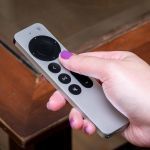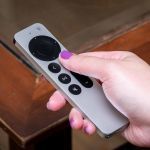Dominique Luchart's Blog, page 604
June 4, 2021
Microsoft says Bing’s ‘Tank Man’ censorship was a human error, Ian Carlos Campbell


On Microsoft’s search engine Bing, searching for “Tank Man,” the iconic figure from the 1989 Tiananmen Square protests in China, turned up no image results in the United States for part of Friday. Vice was able to produce the same results in the US, and heard from multiple users from other countries who ran into the same issue.
Stranger still, searching “Tank Man” or “Tiananmen Square Tank Man” turned up normal search results in Bing, it’s just images that were mysteriously missing. When The Verge contacted Microsoft for an explanation, it said “This is due to an accidental human error and we are actively working to resolve this.”
Search results for “Tank Man” after the accident.It’s an unfortunately timed accident…
The post Microsoft says Bing’s ‘Tank Man’ censorship was a human error, Ian Carlos Campbell appeared first on NEWDAWN Blog.
Microsoft says Bing’s ‘Tank Man’ censorship was a human error,

On Microsoft’s search engine Bing, searching for “Tank Man,” the iconic figure from the 1989 Tiananmen Square protests in China, turned up no image results in the United States for part of Friday. Vice was able to produce the same results in the US, and heard from multiple users from other countries who ran into the same issue.
Stranger still, searching “Tank Man” or “Tiananmen Square Tank Man” turned up normal search results in Bing, it’s just images that were mysteriously missing. When The Verge contacted Microsoft for an explanation, it said “This is due to an accidental human error and we are actively working to resolve this.”
 Search results for “Tank Man” after the accident.
Search results for “Tank Man” after the accident.It’s an unfortunately timed accident given that June 4th, 2021 is the 32nd anniversary of the student-led protests in China — an uprising in response to changes in the country that was met with assault rifles, tanks, and a massacre. Microsoft did eventually restore results to the specific search, though it’s still noticeably missing the well-known image. Adding in a mention of “Tiananmen” or “Tiananmen Square” pulls up what you’d expect, however. It’s not clear why Bing would weigh generic images of tanks more heavily than a famous piece of visual history, but we’ve reached out to Microsoft see if that’s normal.
 Search results for “Tank Man” after Microsoft addressed the issue.
Search results for “Tank Man” after Microsoft addressed the issue.Bing’s presence in China is somewhat complicated. The search engine disappeared from the country for nearly a day in 2019 seemingly because China Unicom, the state-owned telecom company, was ordered to block it, according to the Financial Times. Microsoft did not disclose the cause of the outage, but service was eventually restored.
Google’s experienced issues exploring a modified version of Google Search for China, but faced harsh pushback from employees and US regulators over how the product could impact users in the country.
The post Microsoft says Bing’s ‘Tank Man’ censorship was a human error, appeared first on NEWDAWN Blog.
Apple employees push back against returning to the office in internal letter, Zoe Schiffer

 Illustration by Alex Castro / The Verge
Illustration by Alex Castro / The VergeApple employees are pushing back against a new policy that would require them to return to the office three days a week starting in early September. Staff members say they want a flexible approach where those who want to work remote can do so, according to an internal letter obtained by The Verge.
“We would like to take the opportunity to communicate a growing concern among our colleagues,” the letter says. “That Apple’s remote/location-flexible work policy, and the communication around it, have already forced some of our colleagues to quit. Without the inclusivity that flexibility brings, many of us feel we have to choose between either a combination of our families, our well-being, and being empowered to do our best work, or being a…
The post Apple employees push back against returning to the office in internal letter, Zoe Schiffer appeared first on NEWDAWN Blog.
Apple employees push back against returning to the office in internal letter,

Apple employees are pushing back against a new policy that would require them to return to the office three days a week starting in early September. Staff members say they want a flexible approach where those who want to work remote can do so, according to an internal letter obtained by The Verge.
“We would like to take the opportunity to communicate a growing concern among our colleagues,” the letter says. “That Apple’s remote/location-flexible work policy, and the communication around it, have already forced some of our colleagues to quit. Without the inclusivity that flexibility brings, many of us feel we have to choose between either a combination of our families, our well-being, and being empowered to do our best work, or being a part of Apple.”
The move comes just two days after Tim Cook sent out a note to Apple employees saying they would need return to the office on Mondays, Tuesdays, and Thursdays starting in the fall. Most employees can work remotely twice a week. They can also be remote for up to two weeks a year, pending manager approval.
It’s an easing of restrictions compared to Apple’s previous company culture, which famously discouraged employees from working from home prior to the pandemic. Yet it’s still more conservative compared to other tech giants. Both Twitter and Facebook have told employees they can work from home forever, even after the pandemic ends.
For some Apple workers, the current policy doesn’t go far enough, and shows a clear divide between how Apple executives and employees view remote work.
“Over the last year we often felt not just unheard, but at times actively ignored,” the letter says. “Messages like, ‘we know many of you are eager to reconnect in person with your colleagues back in the office,’ with no messaging acknowledging that there are directly contradictory feelings amongst us feels dismissive and invalidating…It feels like there is a disconnect between how the executive team thinks about remote / location-flexible work and the lived experiences of many of Apple’s employees.”
The letter, addressed to Tim Cook, started in a Slack channel for “remote work advocates” which has roughly 2,800 members. About 80 people were involved in writing and editing the note.
Apple employees say that embracing remote work is paramount for the company’s diversity and inclusion efforts. “For inclusion and diversity to work, we have to recognize how different we all are, and with those differences, come different needs and different ways to thrive,” they say.
Here are the specific asks outlined by employees in the note:
We are formally requesting that Apple considers remote and location-flexible work decisions to be as autonomous for a team to decide as are hiring decisions.
We are formally requesting a company-wide recurring short survey with a clearly structured and transparent communication / feedback process at the company-wide level, organization-wide level, and team-wide level, covering topics listed below.
We are formally requesting a question about employee churn due to remote work be added to exit interviews.
We are formally requesting a transparent, clear plan of action to accommodate disabilities via onsite, offsite, remote, hybrid, or otherwise location-flexible work.
We are formally requesting insight into the environmental impact of returning to onsite in-person work, and how permanent remote-and-location-flexibility could offset that impact.
The letter was sent out for Apple employees to sign late Friday afternoon.
Apple did not immediately respond to a request for comment from The Verge.
Read the full letter below:
Dear Tim and Executive Leadership,
Thank you for your thoughtful considerations on a hybrid approach to returning to office work, and for sharing it with all of us early this week. We appreciate your efforts in navigating what has been undeniably an incredibly difficult time for everyone around the world, and doing so for over one hundred thousand people. We are certain you have more plans than were shared on Wednesday, but are following Apple’s time-honored tradition of only announcing things when they are ready. However, we feel like the current policy is not sufficient in addressing many of our needs, so we want to take some time to explain ourselves.
This past year has been an unprecedented challenge for our company; we had to learn how to deliver the same quality of products and services that Apple is known for, all while working almost completely remotely. We did so, achieving another record-setting year. We found a way for everyone to support each other and succeed in a completely new way of working together — from locations we were able to choose at our own discretion (often at home).
However, we would like to take the opportunity to communicate a growing concern among our colleagues. That Apple’s remote/location-flexible work policy, and the communication around it, have already forced some of our colleagues to quit. Without the inclusivity that flexibility brings, many of us feel we have to choose between either a combination of our families, our well-being, and being empowered to do our best work, or being a part of Apple. This is a decision none of us take lightly, and a decision many would prefer not to have to make. These concerns are largely what prompted us to advocate for changes to these policies, and data collected will reflect those concerns.
Over the last year we often felt not just unheard, but at times actively ignored. Messages like, ‘we know many of you are eager to reconnect in person with your colleagues back in the office,’ with no messaging acknowledging that there are directly contradictory feelings amongst us feels dismissive and invalidating. Not only do many of us already feel well-connected with our colleagues worldwide, but better-connected now than ever. We’ve come to look forward to working as we are now, without the daily need to return to the office. It feels like there is a disconnect between how the executive team thinks about remote / location-flexible work and the lived experiences of many of Apple’s employees.
For many of us at Apple, we have succeeded not despite working from home, but in large part because of being able to work outside the office. The last year has felt like we have truly been able to do the best work of our lives for the first time, unconstrained by the challenges that daily commutes to offices and in-person co-located offices themselves inevitably impose; all while still being able to take better care of ourselves and the people around us.
Looking around the corner, we believe the future of work will be significantly more location and timezone flexible. In fact, we are already a distributed company with offices all over the world and across many different timezones. Apple’s organizational hierarchy lends itself towards offices that often follow the same structure, wherein people in the same organization are more likely to be co-located in an office. At the same time, we strongly encourage cross-functional, cross-organization collaboration, and our organization’s many horizontal teams reflect this. Such collaboration is widely celebrated across our organization, and arguably leads us to our best results — it’s one of the things that makes Apple, Apple. However, orgs are rarely co-located within walking distance, let alone in the same building, meaning our best collaboration has always required remote communication with teams in other offices and across timezones, since long before the pandemic. We encourage distributed work from our business partners, and we’ve been a remote-communication necessary company for some time, a vision of the future that Steve Jobs himself predicated in an interview from 1990. This may explain how mandatory out-of-office work enabled tearing down cross-functional communication barriers to deliver even better results.
Almost all of us have worked fully remote for over a year now, though the experience arguably would have been better less one pandemic. We have developed two major versions of all our operating systems, organized two full WWDCs, introduced numerous new products, transitioned to our own chipsets, and supported our customers with the same level of care as before. We have already piloted location-flexible work the last 15 months under much more extreme conditions and we were very successful in doing so, finding the following benefits of remote and location-flexible work for a large number of our colleagues:
Diversity and Inclusion in Retention and HiringTearing Down Previously Existing Communication BarriersBetter Work Life BalanceBetter Integration of Existing Remote / Location-Flexible WorkersReduced Spread of PathogensWe ask for your support in enabling those who want to work remotely / in location-flexible ways to continue to do so, letting everyone figure out which work setup works best for them, their team, and their role — be it in one of our offices, from home, or a hybrid solution. We are living proof that there is no one-size-fits-all policy for people. For Inclusion and Diversity to work, we have to recognize how different we all are, and with those differences, come different needs and different ways to thrive. We feel that Apple has both the responsibility to recognize these differences, as well as the capability to fully embrace them. Officially enabling individual management chains and individual teams to make decisions that work best for their teams roles, individuals, and needs — and having that be the official stated policy rather than the rare individual exceptions — would alleviate the concerns and reservations many of us currently have.
We understand that inertia is real and that change is difficult to achieve. The pandemic forcing us to work from home has given us a unique opportunity. Most of the change has already happened, remote/location-flexible work is currently the “new normal,” we just need to make sure we make the best of it now. We believe that Apple has the ability to be a leader in this realm, not by declaring ‘everyone just work from home for forever,’ as some other companies have done, but by declaring an official broad paradigm policy, that allows individual leaders to make decisions that will enable their teams to do the best work of their lives. We strongly believe this is the ideal moment to “burn the boats” — to boldly declare ‘yes this can be done, and done successfully, because there is no other choice for the future.’
We have gathered some of our requests and action items to help continue the conversation and make sure everyone is heard.
We are formally requesting that Apple considers remote and location-flexible work decisions to be as autonomous for a team to decide as are hiring decisions.We are formally requesting a company-wide recurring short survey with a clearly structured and transparent communication / feedback process at the company-wide level, organization-wide level, and team-wide level, covering topics listed below.We are formally requesting a question about employee churn due to remote work be added to exit interviews.We are formally requesting a transparent, clear plan of action to accommodate disabilities via onsite, offsite, remote, hybrid, or otherwise location-flexible work.We are formally requesting insight into the environmental impact of returning to onsite in-person work, and how permanent remote-and-location-flexibility could offset that impact.We have great respect for Apple and its leadership; we strongly believe in the Innovation and Thinking Differently (from “the way things have always been done” and “industry standards”) that are part of Apple’s DNA. We all wish to continue to “bleed six colors” at Apple itself and not elsewhere. At Apple, our most important resource, our soul, is our people, and we believe that ensuring we are all heard, represented, and validated is how we continue to defend and protect that precious sentiment.
This is not a petition, though it may resemble one. This is a plea: let’s work together to truly welcome everyone forward.
The post Apple employees push back against returning to the office in internal letter, appeared first on NEWDAWN Blog.
TikTok says the repeat removal of the intersex hashtag was a mistake, Kait Sanchez

 Illustration by Alex Castro / The Verge
Illustration by Alex Castro / The VergePidgeon Pagonis, an intersex activist, noticed last week that the #intersex hashtag wasn’t working on TikTok. They couldn’t click the tag on one of their own posts and trying to search for intersex pulled up a “null” page. This was the second time Pagonis noticed the tag disappearing, and they worried that TikTok had banned it just as they were about to start a series of celebratory videos called Intersex Joy.
Pagonis usually feels safe on TikTok because people on the platform are generally receptive to intersex topics. After growing up with secrecy, lies, and shame around being intersex, Pagonis sees TikTok and other platforms as spaces where intersex people “can connect with each other and also advocate for ourselves and each other,…
The post TikTok says the repeat removal of the intersex hashtag was a mistake, Kait Sanchez appeared first on NEWDAWN Blog.
TikTok says the repeat removal of the intersex hashtag was a mistake,

Pidgeon Pagonis, an intersex activist, noticed last week that the #intersex hashtag wasn’t working on TikTok. They couldn’t click the tag on one of their own posts and trying to search for intersex pulled up a “null” page. This was the second time Pagonis noticed the tag disappearing, and they worried that TikTok had banned it just as they were about to start a series of celebratory videos called Intersex Joy.
Pagonis usually feels safe on TikTok because people on the platform are generally receptive to intersex topics. After growing up with secrecy, lies, and shame around being intersex, Pagonis sees TikTok and other platforms as spaces where intersex people “can connect with each other and also advocate for ourselves and each other, and then other people can learn about intersex.”
But when the easiest way to discover intersex content on TikTok disappears, that erasure follows the historical mistreatment of intersex people. “My community is erased with a scalpel, and with words and linguistics,” says Pagonis, “but this time they’re literally erasing the word.”
TikTok tells The Verge that in both of the instances Pagonis noticed, the tag had been removed by mistake and was subsequently restored. But because there was no public statement about the accidental removal, Pagonis and others were left to speculate about whether it was being intentionally censored.
The muddiness around content removal and moderation on TikTok is an ongoing frustration for the app’s users. TikTok has community guidelines, but there’s no public list of specific words and phrases that are banned, and it’s not clear how much moderation is done algorithmically versus by actual people. Previously, TikTok has limited the reach of posts by LGBTQ people, disabled people, and people who were deemed “ugly” or poor, and has been accused of suppressing Black creators.
People use different tactics to skirt TikTok’s jumbled moderation. Some lesbians on the app jokingly refer to themselves as “le dolla bean” based on the “le$bian” spelling that’s used to avoid their videos being removed. “It became this whole joke,” says Mar Hicks, a historian of technology, “because things that have the word lesbian in them were either getting flagged for deletion or causing the users’ accounts to get in trouble.”
Creators on TikTok feel that they have to be overly cautious about what they post, “because the rules change at any given moment, there’s no transparency,” Hicks says. The sudden disappearance of tags, intentional or not, has “incredibly problematic effects and negative effects on communities that are already marginalized and erased.”
Queer people and people of color have found the guidelines are enforced “wildly differently” says Hicks, meaning their content will be suppressed or removed for supposed violations, but they get no response when they report abuse from other users. “Not only is it hurting their ability to speak and be seen on the app, but it’s also allowing them to get attacked and have hate speech thrown their way.”
Other platforms, including Facebook, Twitter, and Instagram, have chalked up the restriction of certain accounts or content to technical bugs, moderation errors, or problems with their algorithms. Hicks says the lack of transparency from TikTok is a serious problem, “and the same goes for any platform that is not being transparent about its standards, and its moderation tactics, and the extent of how automatic it is.”
“I thought this was my happy place,” says Pagonis, whose fondness for TikTok has been shaken now that the intersex tag has vanished more than once. They still want to share videos about intersex experiences. But they’re frustrated at the lack of clarity, and wish the platform would be more intentional about uplifting marginalized voices.
The post TikTok says the repeat removal of the intersex hashtag was a mistake, appeared first on NEWDAWN Blog.
Watch live Saturday: SpaceX CRS-22 Dragon cargo ship to dock at space station, ,

SpaceX’s 22nd Dragon cargo resupply mission will arrive at the International Space Station on Saturday, June 5, and you can watch it live here. Docking is set for 5 a.m. EDT (0900 GMT).
The mission, called CRS-22, launched into orbit on Thursday (June 3) on a SpaceX Falcon 9 rocket, which lifted off from Launch Complex 39A at NASA’s Kennedy Space Center in Florida.
NASA’s webcast will begin at 3:30 a.m. EDT (0730 GMT). Saturday’s docking will deliver 4,300 lbs. of pressurized cargo and two new solar arrays (weighing 3,000 lbs. altogether) to the space station.
NASA commercial cargo provider SpaceX is targeting 1:29 p.m. EDT, Thursday, June 3, to launch its 22nd commercial resupply services mission to the International Space Station. Liftoff will be from Launch Complex 39A at the agency’s Kennedy Space Center in Florida. SpaceX’s Dragon spacecraft will deliver new solar arrays to power future work aboard the orbiting laboratory, along with new science investigations, supplies, and equipment for the international crew. Live coverage will air on NASA Television, the NASA app and the agency’s website, with prelaunch events starting Wednesday, June 2.
Dragon’s pressurized capsule will carry a variety of research, including an experiment that could help develop better pharmaceuticals and therapies for treating kidney disease on Earth, a study of cotton root systems that could identify varieties of plants that require less water and pesticides. The research also will include two model organism investigations: One will study bobtail squid to examine the effects of spaceflight on interactions between beneficial microbes and their animal hosts. The other will examine tardigrades’ adaptation to conditions in low-Earth orbit, which could advance understanding of the stress factors affecting humans in space.
The mission will include technology demonstrations, including a portable ultrasound device. Additionally, astronauts will test the effectiveness of remotely operating robotic arms and space vehicles using virtual reality and haptics interfaces.
Dragon’s unpressurized trunk section will deliver the first two of six new roll-out solar arrays based on a design tested on the space station in 2017. A robotic arm will extract them and astronauts will install them during a series of spacewalks this summer.
About 12 minutes after launch, Dragon will separate from the Falcon 9 rocket’s second stage and begin a carefully choreographed series of thruster firings to reach the space station. Arrival to the space station is planned for Saturday, June 5. Dragon will autonomously dock to the space-facing port on the station’s Harmony module, with Expedition 65 Flight Engineers Shane Kimbrough and Megan McArthur of NASA monitoring operations.
The spacecraft is expected to spend more than a month attached to the space station before it splashes down in the Atlantic Ocean, returning with research and return cargo.
Full coverage of this mission is as follows (all times Eastern):
Wednesday, June 2
11 a.m. – Want an in-depth look at the science aboard Dragon? Watch on NASA TV or join us on Kennedy Space Center’s Facebook and YouTube pages as we chat with some of the principal investigators. If you have questions for them, use #AskNASA on Twitter. They may answer in real-time during the segment.
1:30 p.m. – NASA TV will broadcast a prelaunch news conference from Kennedy with representatives from NASA’s International Space Station Program, SpaceX, and the U.S. Space Force Space Launch Delta 45. For the dial-in number and passcode, please contact the Kennedy newsroom at ksc-newsroom@mail.nasa.gov no later than 1 p.m. Wednesday, June 2. The public can also ask questions by using #AskNASA on Twitter. They may be answered in real-time during the segment.
Thursday, June 3
1 p.m. – NASA TV coverage begins for the targeted 1:29 p.m. launch.
Saturday, June 5
3:30 a.m. – NASA TV coverage begins for Dragon docking to space station.
5 a.m. – Docking
NASA TV Launch Coverage
Live coverage of the launch on NASA TV will begin at 1 p.m. Thursday, June 3. For NASA TV downlink information, schedules, and links to streaming video, visit:
Audio of the news conference and launch coverage will be carried on the NASA “V” circuits, which may be accessed by dialing 321-867-1220, -1240, -1260 or -7135. On launch day, “mission audio” countdown activities without NASA TV launch commentary, will be carried on 321-867-7135.
On launch day, a “clean feed” of the launch without NASA TV commentary will be carried on the NASA TV media channel.
NASA Website Launch Coverage
Launch day coverage of the mission will be available on NASA’s website. Coverage will include live streaming and blog updates beginning no earlier than 1 p.m. Thursday, June 3, as the countdown milestones occur. On-demand streaming video and photos of the launch will be available shortly after liftoff. For questions about countdown coverage, contact the Kennedy newsroom at 321-867-2468. Follow countdown coverage on the agency’s launch blog at:
https://blogs.nasa.gov/spacexcrs22/
Attend This Launch Virtually
Members of the public can register to attend this launch virtually. Attendees will receive mission updates and activities via email. NASA’s virtual guest program for this mission also includes curated launch resources, notifications about related opportunities, as well as a stamp for their NASA virtual guest passport following a successful launch.
Watch and Engage on Social Media
Let people know you’re following the mission on Twitter, Facebook, and Instagram by using the hashtags #Dragon and #NASASocial. You can also stay connected by following and tagging these accounts:
Twitter: @NASA, @NASAKennedy, @NASASocial, @Space_Station, @ISS_Research, @ISS National Lab, @SpaceX
Facebook: NASA, NASAKennedy, ISS, ISS National Lab
Instagram: @NASA, @NASAKennedy, @ISS, @ISSNationalLab, @SpaceX
Learn more about the SpaceX resupply mission at:
Find out what the astronauts and cosmonauts aboard the International Space Station are up to by tuning in to the “ISS Live” broadcast. Hear conversations between the crew and mission controllers on Earth and watch them work inside the U.S. segment of the orbiting laboratory. When the crew is off duty, you can enjoy live views of Earth from Space. You can watch and listen in the window below, courtesy of NASA.
“Live video from the International Space Station includes internal views when the crew is on-duty and Earth views at other times. The video is accompanied by audio of conversations between the crew and Mission Control. This video is only available when the space station is in contact with the ground. During ‘loss of signal’ periods, viewers will see a blue screen.
“Since the station orbits the Earth once every 90 minutes, it experiences a sunrise or a sunset about every 45 minutes. When the station is in darkness, external camera video may appear black, but can sometimes provide spectacular views of lightning or city lights below.”
Follow us on Twitter @Spacedotcom and on Facebook.
The post Watch live Saturday: SpaceX CRS-22 Dragon cargo ship to dock at space station, , appeared first on NEWDAWN Blog.
Apple’s new TV remote is great, but only when apps properly support it, Jon Porter

 Photo by Chris Welch / The Verge
Photo by Chris Welch / The VergeUsers are complaining that the Disney Plus and HBO Max Apple TV apps aren’t properly supporting the excellent new Siri Remote. Disney Plus has yet to be updated to make use of the remote’s helpful scroll wheel scrubbing feature, which works on rival Netflix and Apple TV Plus apps. The HBO Max app has more issues, Screen Times reports, and lacks support for several of the remote’s features and voice commands.
When we tried the HBO Max app for ourselves, we found it doesn’t seem to support the new remote’s D-pad. Instead, we could only use the remote’s touchpad circle, which is technically an element of the remote you’re supposed to be able to disable. Scrubbing using the touchpad works, just very badly. The cause of these problems…
The post Apple’s new TV remote is great, but only when apps properly support it, Jon Porter appeared first on NEWDAWN Blog.
Apple’s new TV remote is great, but only when apps properly support it,

Users are complaining that the Disney Plus and HBO Max Apple TV apps aren’t properly supporting the excellent new Siri Remote. Disney Plus has yet to be updated to make use of the remote’s helpful scroll wheel scrubbing feature, which works on rival Netflix and Apple TV Plus apps. The HBO Max app has more issues, Screen Times reports, and lacks support for several of the remote’s features and voice commands.
When we tried the HBO Max app for ourselves, we found it doesn’t seem to support the new remote’s D-pad. Instead, we could only use the remote’s touchpad circle, which is technically an element of the remote you’re supposed to be able to disable. Scrubbing using the touchpad works, just very badly. The cause of these problems appears to be a recent app update, which replaced the standard tvOS playback UI with HBO’s own (and apparently far less capable) version.
It just goes to show that a platform holder can build a powerful combination of hardware and software in support of third-party apps and services, but it doesn’t mean anything unless those same apps and services actually bother to add support. We’ve reached out to both Disney Plus and HBO Max to see if they’re aware of the issues, and to find out when users can expect a fix.
The post Apple’s new TV remote is great, but only when apps properly support it, appeared first on NEWDAWN Blog.
A very sus chicken nugget shaped like an Among Us crewmate sells for $99,997 on eBay,

After an intense, dayslong bidding war, a single McDonald’s chicken nugget shaped like one of the Among Us crewmates has just sold for an eye-watering $99,997on eBay.
The little nugget started off from humble beginnings, listed for a respectable 99 cents on May 28th. (I’d pay that much for it. Maybe even $5.) And for a little while, there were no bids.
But then, two days after it was first listed, somebody placed an (at the time) astonishingly high $14,869.69 first bid on the nugget, and things just escalated from there. I recommend scrolling through the bid history, it’s wild.
 The completed listing.Screenshot: eBay
The completed listing.Screenshot: eBayOne factor that may have driven up the price is that the nugget apparently came from a BTS Meal — yes, like the huge K-pop group. Maybe BTS Meal nuggets taste better?
Oh, and if you were wondering, should the buyer choose to eat the nugget it might be safe to — the seller said they would freeze and air-seal the nugget and that it would be delivered “prior to expiration.” If I were the buyer, though, I’d use some caution. The seller says that “this food product has an average expiration of about 14 days,” but I am not sure where they’re getting that information.
But if the buyer wants to dip the nugget in some Szechuan sauce? They’ll have to ask for that. “I have Szechuan and at buyers [sic] request will ship some with the nugget,” the seller said. Harsh.
Let’s just hope the nugget isn’t an imposter.
The post A very sus chicken nugget shaped like an Among Us crewmate sells for $99,997 on eBay, appeared first on NEWDAWN Blog.



